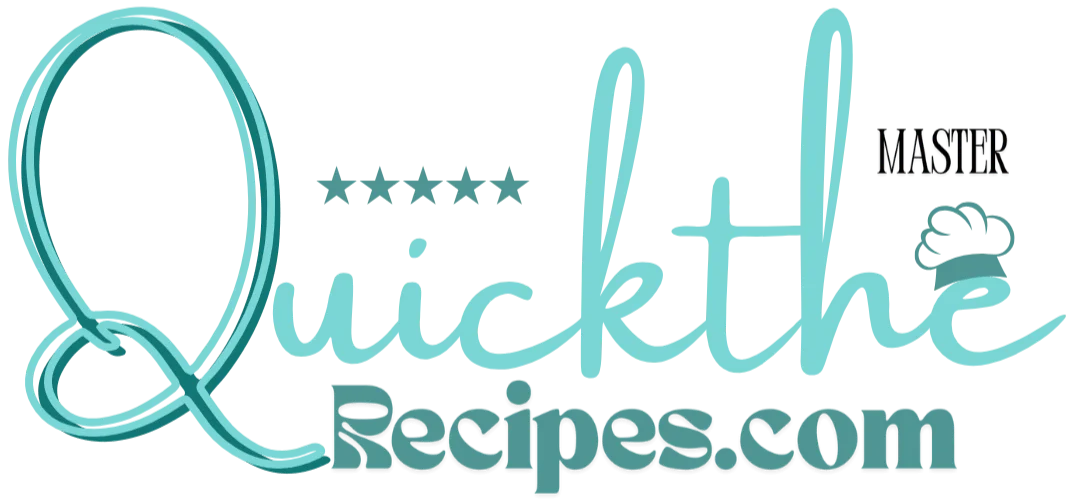Introduction to the Preventing Soggy Nachos Problem
Preventing Soggy Nachos sounds simple, but keeping them crisp and delicious can be surprisingly tricky. One common frustration is the dreaded soggy nachos—when chips turn limp under the weight of wet toppings or incorrect preparation techniques.
This guide will walk you through practical tips and tricks to help you create nachos that stay crunchy, flavorful, and satisfying, even with your favorite toppings.
Understanding Why Nachos Get Soggy
The first step in preventing soggy nachos is to understand what causes them. Several factors contribute to sogginess, but they all boil down to one thing: moisture. Here’s a closer look:
The Role of Moist Ingredients in Sogginess
Toppings like salsa, guacamole, and sour cream are high in moisture. When applied directly to the chips, they can seep into them, breaking their crispy structure.
- Salsa and beans: These are often watery, especially store-bought varieties.
- Cheese: While melted cheese is a nacho essential, using too much or the wrong kind can make the dish greasy and soft.
Timing of Assembling Nachos
Another common culprit is assembling the nachos too early. Chips that sit under toppings for extended periods lose their crunch.
- Assembling too soon before baking or serving causes the chips to absorb the moisture from toppings like meats, beans, or sauces.
Selecting the Right Base for Preventing Soggy Nachos
The foundation of great nachos lies in the choice of tortilla chips. Sturdy, well-prepared chips can stand up to toppings without getting soggy.
Choosing Sturdy Tortilla Chips
- Thick-cut chips: Opt for thick, restaurant-style tortilla chips as they provide better support for toppings.
- Corn over flour: Corn tortilla chips are sturdier and crispier compared to flour-based options.
Avoiding Thin or Delicate Chips
Thin or overly delicate chips tend to crumble under the weight of toppings. They also absorb more moisture, making them prone to sogginess.
- Look for chips labeled as “thick” or “extra crispy.”
Using Homemade Baked or Fried Chips for Extra Crunch
For ultimate control, consider making your own tortilla chips:
- Cut corn tortillas into triangles, then bake or fry them until golden and crisp.
- Season them lightly with salt for added flavor.
Preparing Chips to Resist Sogginess
Even with the best chips, proper preparation is key to preventing soggy nachos.
Preheating Chips in the Oven
Before assembling your nachos, warm your chips in the oven at 350°F for 5-7 minutes. This helps remove any residual moisture and adds extra crispness.
Adding a Light Layer of Cheese as a Protective Barrier
Sprinkle a thin layer of shredded cheese over the chips before adding other toppings. The melted cheese acts as a barrier, preventing wet ingredients from seeping into the chips.
- Pro tip: Use sharp cheddar or Monterey Jack for a flavorful seal.
Avoiding Excess Oil from Chips
If you’re using store-bought chips, check for excess oil. Lay them on paper towels and blot gently to remove surface grease, which can lead to sogginess when combined with toppings.
Assembling Nachos Strategically
Creating perfectly crispy nachos requires careful assembly. The way you layer your ingredients and handle toppings can make all the difference in avoiding soggy chips.
Layering for Maximum Crispness
When assembling nachos, it’s essential to think strategically about layers. Here’s how to do it effectively:
Adding Ingredients in Thin Layers
- Avoid piling on too many toppings in one area. Instead, spread them out in thin, even layers to ensure each chip carries its weight without being overwhelmed.
- Create multiple layers of chips and toppings to distribute the load and keep the base from becoming soggy.
Separating Chips and Toppings for Individual Portions
If you’re serving a crowd, consider preparing individual portions rather than a large pile of nachos. This way, each serving gets its own crispy chips with evenly distributed toppings.
- Use small plates, bowls, or trays to customize portions for guests.
- For game nights or parties, this method prevents the dreaded “soggy middle” syndrome.
Controlling Moist Ingredient
The type and preparation of moist toppings like salsa, beans, and guacamole significantly affect your nachos’ crunch factor.
Draining Excess Liquid from Meats, Beans, and Salsa
- Cooked proteins: When using ground beef, chicken, or pork, ensure you drain off any excess grease or liquid after cooking.
- Beans: Rinse canned beans thoroughly and let them dry or pat them with a paper towel to remove surface moisture.
- Salsa: Opt for thicker, chunkier salsas and drain off excess liquid before applying.
Using Fresh Ingredients Sparingly
Fresh toppings like tomatoes, onions, or cilantro add vibrant flavor but can introduce moisture. Use them sparingly, and pat them dry if necessary to reduce water content.
Opting for Chunky Salsa or Pico de Gallo Instead of Saucy Varieties
- Chunky salsas and pico de gallo are less watery compared to traditional jarred salsas. They add texture and flavor without soaking into the chips.
- Avoid smooth, runny salsas that can pool at the bottom of your nacho platter.
Adding Toppings at the Right Time
Timing is everything when it comes to topping your nachos. Adding the right ingredients at the right moment ensures maximum crunch.
Baking Chips and Cheese First
Before adding wet or cold toppings, bake the chips and cheese alone:
- Preheat your oven to 375°F.
- Arrange chips in a single layer on a baking sheet.
- Sprinkle cheese evenly across the chips and bake until melted (about 5-7 minutes).
This method creates a crispy, cheesy base ready to handle additional toppings.
Adding Cold or Moist Ingredients After Baking
Once your nachos come out of the oven, add toppings like sour cream, guacamole, or salsa. Doing this after baking prevents these ingredients from breaking down the chips.
- Pro tip: Use a piping bag for sour cream and guacamole to add small, neat dollops across the nachos.
More Tips for Building Soggy-Free Nachos
Now that you’ve mastered the art of layering and timing, let’s dive into creative solutions and serving techniques to keep nachos crisp.
Creative Nacho Solutions
If you’re preparing nachos for a large group or event, these creative solutions can help maintain crispness:
- Separate Layers of Chips and Toppings: Spread chips and toppings on different baking trays. This ensures each chip is evenly coated without overcrowding.
- Personal Nacho Trays or Cups: Build individual nacho servings in disposable cups or small plates. This prevents chips from becoming overwhelmed in a communal pile.
- Air Frying for a Quick, Crisp Finish: For smaller portions, use an air fryer to achieve extra crispy nachos with minimal effort. Layer chips and cheese in the fryer for a few minutes before serving.
Cooking and Serving Techniques for Crispy Nachos
Proper cooking and serving techniques are just as important as ingredient preparation when it comes to creating crispy nachos. With a little care in the kitchen and thoughtful presentation, you can ensure every bite is crunchy and flavorful.
Baking Tips for Crispy Nachos
Baking is the heart of great nachos. Here’s how to maximize crispness during the cooking process:
Using a High Temperature for Short Cooking Times
- Bake your nachos at 400°F–450°F for 5-10 minutes. A high temperature allows the cheese to melt quickly without soaking into the chips.
- Keep an eye on the oven to avoid burning the edges of your chips.
Avoiding Overloading the Nachos
- Layering matters: Stick to 1-2 layers of chips at a time. Overloading the tray not only causes uneven cooking but also leads to soggy spots where chips are buried.
- For larger batches, bake in multiple trays instead of stacking everything onto one.
Serving Immediately to Retain Crunch
Nachos are best enjoyed fresh out of the oven. Timing is everything when serving them to maintain their crispy texture.
Plating Nachos Just Before Eating
- Wait to plate your nachos until your guests are ready to eat. Sitting for even a few minutes allows moisture to build up, softening the chips.
- Use a slotted spatula to serve nachos so excess toppings don’t accumulate at the bottom.
Using a Warm Serving Plate
- Warm plates or trays keep nachos crispy for longer. Place your serving dish in a low-temperature oven for a few minutes before plating the nachos.
- For party settings, consider using a heated tray or chafing dish to keep nachos warm without making them soggy.
Alternatives for Moist Ingredients
Some toppings are inherently wet, but you can serve them in ways that prevent sogginess while still enhancing the flavor.
Serving Salsa, Guacamole, and Sour Cream on the Side
Instead of smothering nachos with moist ingredients:
- Offer toppings like salsa, guacamole, and sour cream as side dips. Guests can add them at their discretion, ensuring the chips stay crisp until eaten.
- Use small bowls or ramekins to create an attractive dipping station.
Providing Dipping Stations for Guests
- A build-your-own nacho bar lets guests customize their portions while keeping chips and toppings separate until the last moment.
- Offer a variety of toppings to suit different preferences, including chunky pico de gallo, shredded lettuce, and cheese sauces.
Creative Nacho Solution
Sometimes, the best way to avoid soggy nachos is to rethink the traditional setup. Here are a few innovative approaches to try:
Using Separate Layers of Chips and Toppings for Large Groups
For parties, consider serving toppings and chips in separate dishes:
- Layer chips on one tray with a light sprinkling of cheese, and bake them separately.
- Provide a variety of toppings on the side so guests can build their own portions.
Building Personal Nacho Trays or Cups
- Use disposable trays or small bowls to create individual servings. Each person gets their own portion of crisp chips, free from overcrowding.
- Ideal for outdoor events or casual gatherings.
Air Frying for a Quick, Crisp Finish
If you’re pressed for time or making a small batch, an air fryer is a game-changer:
- Add chips and a light layer of cheese to the air fryer basket.
- Cook at 375°F for 3-5 minutes until the cheese melts and the chips crisp up.
Common Mistakes and How to Avoid Them
Even with the best intentions, certain missteps can lead to Preventing Soggy Nachos. Let’s tackle these common mistakes and how to prevent them.
Overloading Chips with Toppings
While it’s tempting to pile on the toppings, too much weight leads to soggy, broken chips.
- Solution: Stick to light, even layers and focus on distributing toppings rather than stacking them.
Using Too Much Sauce or Liquid-Based Ingredients
Saucy ingredients like enchilada sauce, queso, or barbecue sauce can quickly make nachos soggy.
- Solution: Use thicker sauces sparingly and drain any excess liquid before applying.
Not Heating Chips Properly
Cold or room-temperature chips are more prone to absorbing moisture.
- Solution: Always preheat your chips in the oven for 5-7 minutes before assembling the nachos.
Ensuring Chips Are Warm and Crispy Before Assembling
- Spread chips in a single layer on a baking sheet and warm them in a 350°F oven.
- This removes any residual moisture and provides a crisp foundation for toppings.

